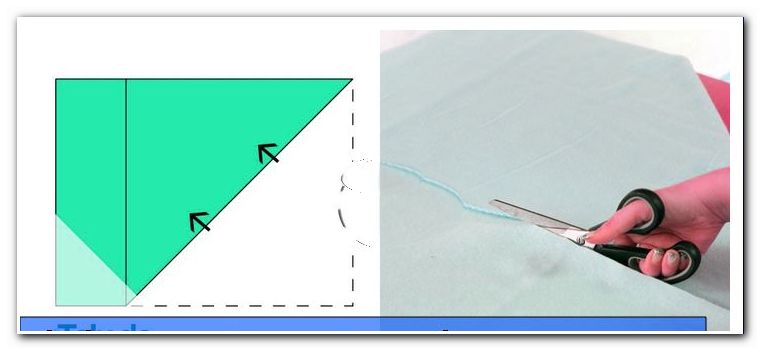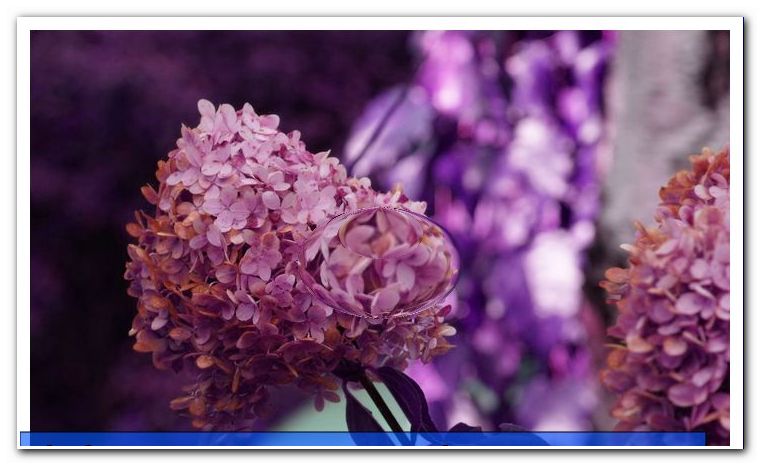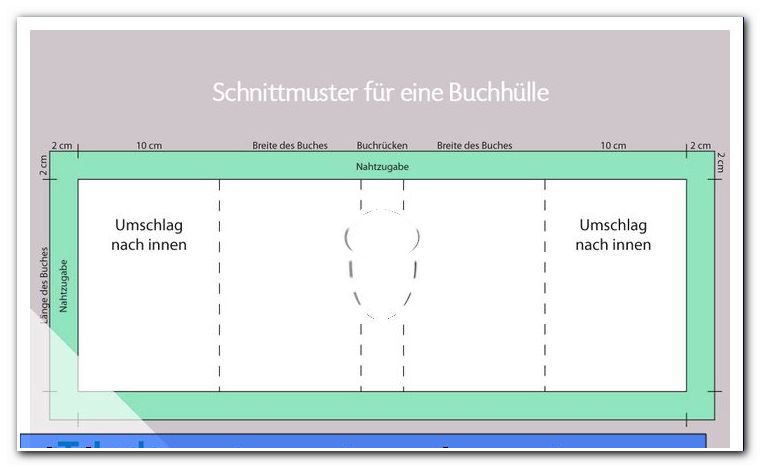Dry Felting - Instructions for felting and felt ideas

- Dry felting with colorful fairy-tale wool
- material
- Training for felting with the felting needle
- How to felt a surface
- How to felt a ball
- Felt a small gift
Dry felting or needle felting is a wonderful technique to discover its artistic side with noble sheep wool. It is not difficult to felt with wool and needle small gifts, decorations or soft toys themselves. With our basic instruction you will get into the art of felting and you will be amazed at the ideas that will come to you during the felting process.
Dry felting with colorful fairy-tale wool
Belong to the felt lovers who would like to make small works of art, but you lack the gift to form beautiful things from wool and soap "> Material
For dry felting you need:
- Fairy-tale wool in fleece in different colors
- felting needles
- felt pad
- possibly a thin cardboard box so that a template can be cut out

Training for felting with the felting needle
Colorful fairytale wool
Dry felting is best done with carded, unspun sheep's wool - they are also called fairy-tale wool in fleece. High-quality fairytale wool is plant-dyed. Who likes to work with and for children, should put emphasis on this natural product.
Fairy-tale wool in fleece is particularly suitable for the pictorial design with the needle. The many small wool fibers of this wool make a wool figure soft, maybe even slightly blurry. That flatters the eye and the soul. The delicate plant colors of this fairytale wool reinforce this impression, so that color and wool harmonize wonderfully with each other.
Felting wool in the combed draw is less suitable for dry felting - but the most beautiful fairies and elves are created from this wool.
Felting needles in different thicknesses
Felting with the felting needle is a process in which the individual wool fibers are compressed together until a solid tissue or a solid body is formed. The felting needles are long thin and very sharp needles, which are provided with fine barbs. These barbs matt the individual wool layers together.
There are felt pins in different thicknesses. For coarse wool and to start the felting process, a coarse needle needle size 32-36 is suitable. For very fine and detailed work, we recommend a fine needle with needle size 40-42. The universal strength, which can be used at any time, has the needle size 38.
Tip: Felt needles you never have too much. They are also usually offered in large quantities in the trade, since sometimes a needle can break off.
A good felt pad
To avoid damaging your fingers when dry felting, you should never work without a felt pad. On this documentation you put your work and then edit the figure. As a felt pad is a foam pad or a larger sponge. For small pieces of felt also a Styrodurplatte can be used. In handicraft shops there are special puncture mats for dry felting. Which document is ideal for you, you will find out for yourself.
Tip: Beginners are advised to fix the felt with a toothpick, so that the fingers are not too often stung by the sharp needle. This also applies to children - they should definitely get used to this technique.
In our short basic course, you will learn how to felt a surface, a sphere and a cylinder and continue to work on it.
How to felt a surface
In our basic instructions for flat dry felting we show you how to felt a flower blossom. For that, you felt the individual petals, the flower center and a plant leaf. The more you felt about it in bright colors, you can arrange everything together to a small mobile and hang it up at the window.
 1. Draw on a cardboard the desired size of a petal, the inside of the flower and the shape of a plant leaf. Cut out the records and use them as a template for your felt flower. This also gives you the guarantee that all the petals will be the same size and the size of the flower stamp matches your leaves.
1. Draw on a cardboard the desired size of a petal, the inside of the flower and the shape of a plant leaf. Cut out the records and use them as a template for your felt flower. This also gives you the guarantee that all the petals will be the same size and the size of the flower stamp matches your leaves.
2. Pluck some wool from the fleece and put it in a slightly spherical shape on the felt pad. The wool should make up at least twice the original.
Now pierce continually with the coarse needle in this woolen boot. You will immediately see how the wool joins together, getting smaller and stronger.
After a short time you will see that the more often you stab in the wool, the matting becomes finer and finer. Edit your flower from all sides, that is, also sting from the edges to the middle, so model your petal. Keep turning your felt work over and over so that both sides are evenly felted.

Tip: Start by experimenting to see how the wool behaves under your felt tip. Turn and turn the work, also pierce from outside to inside, and shape so with your needle the desired figure.
 The more you pierce the needle in the felt work, the firmer and thicker the shape becomes.
The more you pierce the needle in the felt work, the firmer and thicker the shape becomes.
3. Swipe your fingers over and over again and again to smooth the surface and make the puncture points blurry.
For a very fine and delicate surface, put on a very thin layer of wool in addition and work them with the very fine needle stitch by stitch.
Tip: If you find your felt work is getting too thin, just put on more wool and work it in. You will not see any seams - everything connects to a felted unit.
4. If you are satisfied with your first leaf in terms of strength and density, then work the remaining petals according to this pattern.
In our original we felted six petals.
Tip: Do not process the bottom tip of the petal, the side that is then connected to the other leaves, so carefully. It may end quietly airy and woolly. Thus, the individual petals join together when felting together easier, without additional wool must be used for it.
5. For the center of the flower, the pistil, put another ball of wool on your felt pad. It should be at least twice as large as your template and be beautifully fluffy.
Process this wool ball using the same method to a flat round flower stamp.

6. Now that you have finished felting all six petals and the pistil to your satisfaction, put everything together to form a flower on the felt pad. Before you connect the flower center firmly with the petals, first felt the individual flowers together all together. You can also incorporate wool in addition to this. Only then do you felt the flower stamp firmly. Her first flower is ready. Using this method, you can create a whole sea of flowers for your window.
Tip: You can decorate each flower with different colored wool. Let your imagination run free.
To do this, take only a small amount of wool fibers of a different color and work them into your flower according to your idea.
7. For the petals, which are always pretty between the flowers, felt just like the flowers, a leaf of green wool felt. The size of the sheet is determined according to your idea. It's best to make a cardboard template again, which will make your job easier in the beginning.

For the leaf ribs, take a small strand of wool of a darker or lighter color and carefully stretch that strand so that you can lay a fine long line on the leaf. This line is now working as a leaf rib.
With targeted needle stitches you can draw the desired rib shape wonderful on the sheet.
How to felt a ball
 Felt balls are often only the precursor to a felted body when felting. These can be animals, fairy-tale characters, grocery stores and much more, or as in our example, a pincushion in the shape of a cactus.
Felt balls are often only the precursor to a felted body when felting. These can be animals, fairy-tale characters, grocery stores and much more, or as in our example, a pincushion in the shape of a cactus.
1. Pull a wool strand from the wool fleece and knot it. This node is now the approach of a sphere or a cylinder.
Fold the overhanging wool strands over the middle knot and flock them together. To do this, place the ball on the felt pad and carefully begin to matt the ball with the needle.
Tip: If you are still a little untrained in dealing with the pointed felt needle, then simply fix the ball with a toothpick. So your fingers stay healthy.
2. The more you stab the needle into the ball of wool, the firmer and denser your ball will be. But you can also determine the size of the sphere. If you want to make the ball smaller, just work the ball longer with the needle. If you want to make the ball bigger or take on a different shape, simply build it up with extra wool.
3. Just as you can sculpt a sphere, you can also make elongated bodies with the needle. They start knotting a thicker strand of wool again and felt down to the shape of a desired cactus body. For this you can always build new wool, so that the character of the figure becomes clear. In our example, the cactus has the shape of a cylinder.

The lower part of the cactus was left open as a root system. So he can better work into a small pot. Our example shows the cactus in a flowerpot filled with small stones.
Felt a small gift
You can create new shapes with wool and needle, but you can also build on existing shapes. Like on a soap.
There is no better present for the dear friend, than a felted soap. This not only cleans in the shower, it can also be used as a natural exfoliant.
For felting, you should use a soap that is not quite so hard so that the needle tip can still penetrate well into the soap surface.
Make two layers of wool out of your wool fleece. The second layer across the first layer.

Then lay the soap and beat the wool layers evenly over the soap.
Now start carefully to incorporate the wool into the soap. For this purpose, the felting needle should penetrate about one centimeter deep into the soap. Use a coarse needle and prick it slowly and carefully into the soap. You will be tested with patience. Otherwise, if the needle flits through the wool, it is a little slower when felzing the soap.
Felt all the soap with the wool. If you have the feeling that the wool layers are too thin, just felt down a new layer.
After the large areas you felt in the same way also the soap sides, so that a uniform wool layer is around the soap.
The interesting thing about the felted soap is that when you use it in the shower, the felt with the soap gets smaller, they shrink together.
Tip: If you should break off a needle during this work, you must remove the needle tip from the soap, otherwise you could injure yourself while washing.

Of course, if you have felted in the soap, you can decorate it with a pattern. Let your imagination run wild. You will rediscover the creative side in you - you become an artist.




